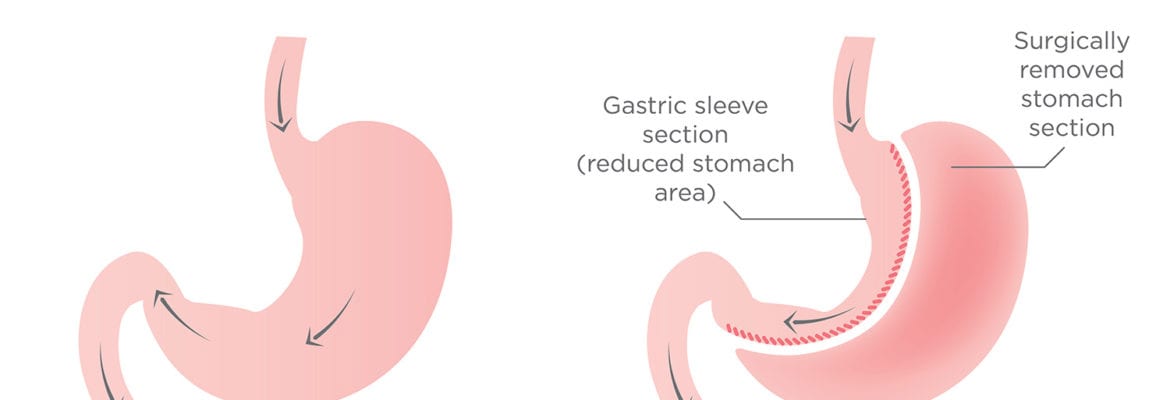
Gastric Sleeve Procedure – How It Works & Who Should Have It
Table of Contents:
Last Updated on November 15, 2023
If you’re reading this post, you know one thing to be true. Losing weight is not nearly as simple as the common “eat less, exercise more” adage makes it seem. You’ve probably tried to do just that several times, and in many different ways, without long-term success. A gastric sleeve procedure may the answer to permanent weight loss you’ve been looking for.
However, before learning more, it is important to understand that while gastric sleeves are the most popular procedure among bariatric surgery patients, it is none-the-less a surgical procedure. One that can have life-changing implications for more than just your body weight.
Regardless of whether or not you meet other qualifying criteria for the surgery, the success of your surgery depends on your willingness and ability to make permanent changes to your diet, activity levels and overall lifestyle.
How a Gastric Sleeve Procedure Helps You Lose Weight
Gastric sleeve surgery is a bariatric procedure that involves removing a portion of your stomach. The remaining part of your stomach is about the size of a banana. The procedure helps you lose weight in three main ways.
You Eat a Smaller Amount of Food
– Gastric sleeve surgery reduces the size of your stomach by about 70%. Following the surgery, you will feel full after eating only a small amount of food and you’ll keep the feeling of fullness for longer than you did before the surgery. Smaller portion sizes mean you’ll consume fewer calories of food.
It Reduces Your Appetite
– This might sound obvious due to a smaller stomach. But, in addition to reducing its size, the portion of the stomach removed in a gastric sleeve includes most of the section of the stomach responsible for producing ghrelin; the hormone that stimulates your appetite by sending hunger signals to the brain. Lower ghrelin production means fewer hunger signals and a reduction in your desire to eat, which also reduces your overall calorie intake.
What Happens During Gastric Sleeve Surgery
A gastric sleeve procedure generally takes less than an hour and recovery times are fast compared to other surgical procedures.
- You are given a general anesthetic which puts you to sleep during the procedure
- A few small incisions are made in your abdomen
- A camera and surgical instruments are inserted through the incisions
- The surgeon removes the “stretchy” portion of your stomach
- The remaining part of your stomach is sealed with surgical staples, forming the “sleeve”
- The instruments are removed and the incisions are closed with stitches
Is Gastric Sleeve Surgery Right for You?
In general, you can consider gastric sleeve surgery if you meet one of the following physical criteria.
- Your body mass index (BMI) is 35 or more.
- Your BMI is over 30 and you suffer from sleep apnea, type 2 diabetes, high blood pressure, high cholesterol, and/or other obesity-related medical conditions.
- Your repeated efforts to lose weight through changes in diet and exercise have been unsuccessful.
Other factors that may affect your eligibility for a gastric sleeve include your age, if you suffer chronic heartburn and/or if you’ve had previous bariatric surgery.
For more information, please feel free to contact the team at The Sleeve Clinic. We’re happy to provide you with any details and assistance we can.
Related Posts





